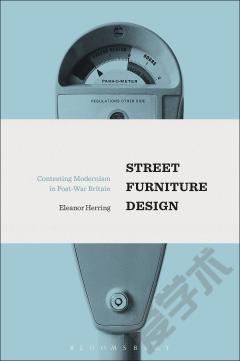Street Furniture Design —— Contesting Modernism in Post-War Britain
----- 街头家具设计:战后英国的现代主义
The project concerns a book on street furniture design to be published in 2016 by Bloomsbury. The principle aim of the book is to examine how the postwar British street was shaped, and who had the power to shape it. It focuses on street furniture design between 1949 and 1974, and the passionate debate that unfolded over objects like lampposts, post boxes, bollards and parking meters. It aims to show, for the first time, that the intensity of the street furniture debate reveals a great deal about the broader anxieties of the postwar period. For while the debate was outwardly concerned with the style of modern bus stops and benches and their relationship to the British landscape, in fact, street furniture emerged as a forum through which postwar anxieties around taste, class, snobbery, and authority could be discussed. Illustrating how the debate on street furniture reflected these broader social, cultural and political themes provides a number of useful insights into the power balance between different groups in postwar Britain - a time of immense change, in which the political landscape of Britain, its cultural expectations, standards of taste and class hierarchies were rigorously debated. This book will illustrate how the struggles between the avant-garde, progressive modernizers, conservative establishment forces, design philistines and the increasingly vocal âuntrained massesâ, came into conflict over how street furniture was designed and who was responsible. Rather than present a chronicle or inventory of street furniture - as much of the existing literature on this topic has done â the objective of this book is instead to examine the multiple interests, agendas and alliances that shape the designed environment. I hope to provide new insights into the power that some individuals and organizations have in this respect, in the past as well as the present, and especially when that process combines those who are trained in design with those who are not. Street furniture is particularly well placed to provide these insights, since it is not only one of the most accessible forms of design, but it is also routinely designed and purchased on our behalf. Investigating who gets to decide what the street looks like remains just as relevant today as it did in the past. Using a wide range of different material â including government papers, early sketches and design plans, interviews with street furniture designers as well as ephemera such as poems about lampposts and satirical cartoons - the book provides another perspective on postwar modernism in Britain, the development of a more plural design culture. It also shows the extent to which external forces affect street furniture design, and underline design as a conceiving, planning, organizing and making activity.
{{comment.content}}








 京公网安备 11010802027623号
京公网安备 11010802027623号